What Exactly is a Drone Scare?
A drone scare refers to an incident involving the unauthorized or malicious use of an unmanned aerial vehicle (UAV), or drone, within a sovereign nation’s airspace, raising concerns about safety, security, or potential criminal activity. This framework encompasses events ranging from unintentional airspace violations to deliberate attempts to disrupt critical infrastructure or conduct illegal surveillance.
Picture a bustling airport, hundreds of flights scheduled to depart, thousands of passengers eagerly awaiting their journeys. Suddenly, the airspace is breached, not by a rogue aircraft, but by a buzzing, unidentified drone, forcing authorities to ground flights, disrupting travel plans, and sending a wave of anxiety through the airport. This scenario, once a hypothetical concern, has become a stark reality, highlighting the vulnerability of sovereign nations to a new dimension of security threats: drone scares.
While drones offer remarkable potential for innovation in various sectors, their accessibility and ease of operation have also opened the door to malicious actors, careless hobbyists, and a spectrum of threats ranging from nuisance to potentially catastrophic.
Is this for real?
Discourse has been marred by a number of high profile incidents that could be rightly considered close calls:
- Drone Disruption at London’s Heathrow Airport (2019): In January 2019, drone sightings caused flight disruptions at London’s Heathrow Airport, one of the busiest airports in the world, grounding flights and causing travel delays. The incident prompted heightened security measures and sparked discussions about the vulnerability of major airports to drone incursions. [Source: “Heathrow Airport suspends flights after drone sighting” by Reuters]
- White House Drone Incident (2015): In January 2015, a small drone crashed on the grounds of the White House in Washington, D.C. While the incident was ultimately determined to be unintentional, it raised concerns about the potential for drones to be used to target high-profile government buildings and officials. [Source: “White House drone crash prompts security review” by BBC News]
- Drone Swarm over French Nuclear Power Plants (2014): In 2014, a series of unauthorized drone flights over several nuclear power plants in France sparked security concerns about the potential for drones to be used for reconnaissance or even attacks on critical infrastructure. The incidents highlighted the difficulty in tracking and identifying small drones, and the need for enhanced security measures around sensitive facilities. [Source: “Drone mystery over French nuclear plants” by The Guardian]
- Drone Interference with Wildfire Response (2020): During the devastating wildfires in California in 2020, unauthorized drone flights over fire zones interfered with firefighting efforts, forcing aerial firefighting aircraft to be grounded and potentially hindering efforts to contain the blazes. This incident highlighted the need for public awareness and stricter regulations to prevent drone interference with emergency response operations. [Source: “Drone interference with California wildfire response raises concerns” by The Verge]
- Ukraine War (2022-present): Russia’s invasion of Ukraine has featured extensive use of Iranian-supplied Shahed-136 “kamikaze” drones. These loitering munitions target Ukrainian infrastructure, especially power grids, causing widespread disruption and civilian hardship. This conflict showcases the evolving use of drones as a strategic tool for asymmetrical warfare and highlights the vulnerability of civilian infrastructure to drone attacks. [Source: “Russia using Iranian-made ‘kamikaze’ drones in Ukraine war, White House says” by CNN ]
- Drone Attacks on Moscow (2023): In May 2023, Moscow experienced a series of drone attacks targeting symbolic and residential areas. While Russia accused Ukraine, responsibility remains disputed. This event demonstrates drones’ growing capability to penetrate even heavily defended airspace, raising concerns about vulnerability even within supposedly secure nations. [Source: “Drone attacks reported in Moscow as Ukraine conflict spills over Russian borders” by The Guardian]
- Increased Drone Flights near NATO Borders (2023): Throughout 2023, NATO countries, particularly those bordering Russia, have reported a surge in unidentified drone activity near their borders. While the intent of these flights remains unclear, they raise concerns about potential surveillance, provocation, or even preparation for future military actions. This activity emphasizes the need for enhanced airspace monitoring and robust counter-drone capabilities to deter intrusions and protect national security. [Source: “NATO Increases Patrols Amid Surge of Russian Drone Activity” by Associated Press]
Did you know?
In 2019, a drone carrying contraband, including drugs and cell phones, crashed near the border between the United States and Mexico? [Source: “Drone Carrying Drugs, Cell Phones Crashes Near U.S.-Mexico Border” by CNN] This incident is a stark reminder of the potential for drones to be used for illicit activities, challenging traditional security measures and forcing authorities to adapt to a rapidly evolving threat landscape.
Thesis Statement: Drone scares represent a significant and evolving security challenge for sovereign nations, requiring a multifaceted approach that combines technological innovation, robust legal frameworks, international cooperation, and a heightened awareness of the potential risks associated with the proliferation of drone technology.
The Shadow of the Drones: Understanding the Multifaceted Threat
The accessibility and versatility of drones have made them increasingly popular for various purposes, from aerial photography and videography to agriculture, construction, and delivery services. However, this same accessibility has also opened the door to a range of security concerns, as unauthorized or malicious use of drones can pose significant threats to individuals, communities, and national security.
- Airspace Violations: Drones can easily penetrate restricted airspace, such as that around airports, government buildings, military installations, or critical infrastructure sites. This can disrupt aviation safety, compromise national security, and create panic among the public.
- Example: In December 2018, drone sightings caused major disruptions at Gatwick Airport in the United Kingdom, grounding hundreds of flights and affecting thousands of passengers over a period of 36 hours, highlighting the vulnerability of critical infrastructure to drone disruptions. [Source: “Gatwick Airport Drone Disruption” BBC News]
- Surveillance and Espionage: Drones equipped with high-resolution cameras, thermal imaging sensors, or other advanced technologies can be used to gather intelligence, conduct unauthorized surveillance, or spy on individuals, businesses, or government agencies. This raises concerns about privacy violations, the compromise of sensitive information, and the potential for corporate espionage or even state-sponsored surveillance.
- Fun Fact: Some drones are so small and quiet that they can be difficult to detect with the naked eye, making them ideal tools for covert surveillance operations.
- Smuggling and Trafficking: The maneuverability and relative anonymity of drones make them attractive tools for smuggling illicit goods, including drugs, weapons, contraband, or even people, across borders or into secure areas. This poses a significant challenge for law enforcement and border security agencies, requiring new strategies and technologies to combat drone-enabled smuggling. [Source: “Drones and Border Security: Challenges and Opportunities” by the Center for Strategic and International Studies (CSIS)]
- Disruption of Critical Infrastructure: Drones can potentially disrupt the operation of critical infrastructure, such as power grids, communication networks, transportation systems, or water treatment facilities. This disruption could be caused by intentional attacks, such as collisions with power lines or interference with communication signals, or by accidents, such as drones malfunctioning and crashing into sensitive equipment.
- Terrorist Attacks: Perhaps the most alarming concern is the potential use of drones for terrorist attacks. Drones can be used to carry explosives, release hazardous materials, or even conduct targeted assassinations, posing a significant threat to public safety and national security. [Source: “The Drone Terrorist Threat” by the Council on Foreign Relations]
Confronting the Challenge: Strategies and Solutions
Addressing the threat posed by drone scares requires a multifaceted approach that combines technological innovation, legal and regulatory frameworks, international cooperation, and a heightened awareness of the potential risks.
- Developing Robust Detection and Counter-Drone Systems: Sovereign nations need to invest in technologies that can effectively detect, track, identify, and neutralize unauthorized drones. These counter-drone systems utilize various techniques, including radar, radio frequency sensors, acoustic detection, optical cameras, and even trained birds of prey.
- Types of Countermeasures: Once an unauthorized drone is detected, various countermeasures can be deployed, including jamming its communication signals, disrupting its GPS navigation, deploying nets to capture it, or utilizing high-powered lasers to disable it. [Source: “Counter-Drone Technologies: An Overview” by the RAND Corporation]
- Establishing Clear Legal Frameworks and Regulations: Comprehensive laws and regulations are essential for governing the use of drones, ensuring responsible operation, and deterring malicious activities. These frameworks should address airspace restrictions, licensing and registration requirements for drone operators, data privacy concerns, and penalties for unauthorized or malicious use.
- Example: The United States Federal Aviation Administration (FAA) has established comprehensive regulations for drone operations, including registration requirements for drones weighing over 0.55 pounds, remote pilot certification for commercial drone operators, airspace restrictions, and operating guidelines. [Source: “Unmanned Aircraft Systems (UAS)” by the Federal Aviation Administration]
- Enhancing International Cooperation: The transnational nature of drone threats necessitates cooperation between countries to share information, coordinate responses, harmonize regulations, and develop common standards and protocols. This collaboration can help address cross-border drone smuggling, the proliferation of drone technology, and the development of effective countermeasures.
- Raising Public Awareness: Educating the public about drone safety, responsible operation, the potential risks of unauthorized use, and the importance of reporting suspicious drone activity is crucial for preventing incidents and mitigating threats. Public awareness campaigns can play a vital role in fostering a culture of responsible drone use.
- Investing in Cybersecurity: As drones become more sophisticated, connected, and reliant on software and data networks, cybersecurity measures become increasingly crucial. Protecting drone systems from hacking, malware attacks, and unauthorized access is essential for preventing their misuse or hijacking for malicious purposes.
- Balancing Security with Innovation: Striking the right balance between addressing security concerns and promoting the innovative and beneficial uses of drone technology is a crucial challenge. Governments and regulators need to create frameworks that allow for innovation and growth in the drone industry while mitigating the risks associated with unauthorized or malicious use.
Russia’s Role in Weaponizing the Skies and Exporting Instability
While drone technology presents global challenges, recent years have seen Russia emerge as a central figure in escalating the threat to non-combatant sovereignties. This isn’t mere speculation, but a pattern backed by substantial evidence. The Kremlin’s actions, both directly and through proxies, have weaponized the skies, making the world a significantly more dangerous place. Here’s why the spotlight falls so heavily on Russia:
- The Ukraine War: A Textbook Case: The ongoing conflict in Ukraine provides a glaring example of Russia’s drone warfare strategy. While facing a conventional military disadvantage, Moscow has increasingly relied on Iranian-supplied Shahed-136 drones, often referred to as “kamikaze” drones. These loitering munitions have wreaked havoc on Ukrainian infrastructure, crippling power grids, disrupting essential services, and inflicting terror on civilians.
- Source: “Russia’s Use of Iranian Drones Creates New Dangers for Ukraine” – The New York Times, December 19, 2022
- Beyond Ukraine’s Borders: The concern is not confined to the immediate conflict zone. Russia has a history of using drones, either directly or by supplying them to allies, in destabilizing ways across multiple regions. Examples include Syria, where Russian drones have been used extensively against both rebel groups and civilian populations, and Libya, where Moscow-backed forces have deployed drones in violation of a UN arms embargo.
- Source: “Russia’s Drone Diplomacy” – Foreign Policy, February 18, 2021
- The Proliferation Pipeline: The Kremlin is not only a user but also a major exporter of drone technology, often to regimes with questionable human rights records or expansionist ambitions. This includes the sale of advanced Orlan-10 drones to Belarus, a close ally, and the potential transfer of drone technology to countries like Iran and Venezuela. This proliferation fuels regional instability, empowers autocratic regimes, and undermines international efforts to control the spread of this potent weaponry.
- Source: “Russia and Iran Step Up Drone Cooperation Amid Ukraine War” – The Wall Street Journal, November 2, 2022
- A Calculated Strategy: Russia’s actions appear part of a deliberate strategy to circumvent conventional military limitations and project power in a cost-effective manner. Drones offer Moscow a way to inflict significant damage, sow discord, and exert influence without risking major conventional engagements. This approach is particularly appealing in situations where they face stronger adversaries or where international condemnation is likely.
- The Danger of Normalization: Russia’s increasingly brazen use of drones against non-combatant targets sets a dangerous precedent, normalizing this tactic and potentially emboldening other actors to follow suit. This erosion of norms creates a more volatile global security environment, where the threshold for deploying drones lowers and the risk of unintended escalation rises.
The evidence points toward a clear pattern: Russia’s weaponization and proliferation of drones, fueled by both geopolitical ambitions and a desire to exploit this emerging technology for strategic gain, pose a clear and present danger to global security. Their actions demand a concerted response from the international community, one that combines diplomatic pressure, targeted sanctions, and a renewed focus on multilateral efforts to curb the uncontrolled spread of this powerful and increasingly destabilizing technology.
Critical Steps Toward a Solution
Global and Cooperative Strategies:
- Strengthen International Drone Regulations: A robust, internationally recognized treaty specifically addressing military drone use, export controls, and accountability for cross-border incidents is crucial.
- Enhanced Airspace Monitoring and Defense Networks: Nations must collaborate to improve early warning systems for unauthorized drone activity, including shared radar data, joint training exercises, and development of common protocols for intercepting suspicious drones.
- Promote Transparency and Information Sharing: Encourage greater openness about drone programs, including capabilities, deployments, and incidents, both to build trust and to enable more effective countermeasures through shared knowledge.
- Invest in Counter-Drone Technology R&D: Prioritize joint research and development efforts into advanced counter-drone technologies, focusing on scalable, cost-effective solutions for detection, identification, and neutralization.
Demanding Russian Accountability:
- Impose Targeted Sanctions on Russian Drone Programs: Specifically target entities involved in the production, development, or deployment of drones used in aggressive or destabilizing actions, aiming to cripple their financial and technological capacity.
- Diplomatic Pressure and Condemnation: Use diplomatic channels and international forums to condemn Russia’s reckless drone activities, isolate them diplomatically, and pressure them to comply with international norms.
- Support for Victims of Russian Drone Attacks: Provide aid and support to nations and communities affected by Russian drone attacks, including humanitarian assistance, reconstruction efforts, and legal support for seeking redress.
- Demand Independent Investigations into Russian Drone Incidents: Call for independent investigations led by international organizations to document and verify allegations of Russian drone misuse, holding perpetrators accountable and establishing a clear record of violations.
Internal Security Measures:
- Strengthen Critical Infrastructure Defenses: Implement robust physical and cybersecurity measures to protect essential infrastructure from drone attacks, including hardening facilities, implementing intrusion detection systems, and developing redundancies to minimize disruption.
- Enact Clear Domestic Drone Regulations: Each nation should create and enforce clear rules governing the civilian use of drones, including registration, licensing, and flight restrictions to prevent unintended airspace violations and enable rapid identification of rogue drones.
Staying Ahead of the Game: The Need for Adaptation and Innovation
The field of drone technology is evolving rapidly, creating a moving target for those seeking to mitigate its risks and harness its potential. Staying ahead of the game requires continuous adaptation, innovation, and a commitment to staying informed about the latest developments.
Here are some key considerations:
- Technological Advancements: The pace of innovation in drone technology is astonishing, with new advancements in artificial intelligence, autonomy, and swarming capabilities emerging rapidly. It’s crucial to stay informed about these developments to assess their potential impacts and develop appropriate countermeasures.
- The Hybrid Warfare Landscape: Drones are often used in conjunction with other military technologies, cyberwarfare, and information operations, creating a complex hybrid warfare environment that requires new strategies and approaches. [Source: “The Future of Warfare: A Guide to Next-Generation Conflict” by Robert H. Latiff]
- Non-State Actors and the Asymmetric Threat: Non-state actors, including terrorist organizations and insurgent groups, are increasingly acquiring and utilizing drone technology, creating new challenges for counterterrorism efforts.
- The Need for a Multi-Layered Approach: Addressing the complex challenges of drone warfare requires a multi-layered approach, involving technological advancements, legal and ethical frameworks, international cooperation, and a commitment to human rights and the principles of just war.
- The Ethical Dimension: As drone technology becomes more sophisticated and autonomous, ethical considerations surrounding the use of lethal force, accountability, and the potential for unintended consequences become even more pressing.
Key Takeaways
- The Threat is Real and Escalating: Russia’s drone activities are not isolated incidents, but part of a calculated strategy to leverage this technology for strategic advantage and export instability to regions aligned with their interests.
- Beyond Ukraine: While the war in Ukraine provides a stark example, the danger extends to any nation within range of Russia’s drones or those receiving their technology. The threat is global in scope.
- Economic and Social Costs: Drone attacks inflict devastating human costs—death, injury, displacement, and trauma—but also carry immense economic burdens. Targeting infrastructure cripples economies, disrupts essential services, and hampers long-term development.
- A Multidimensional Challenge: Countering the threat demands a multifaceted approach—technological solutions (counter-drone systems), legal frameworks (international regulations and domestic laws), and diplomatic pressure on Russia to curb their activities.
- International Cooperation is Paramount: No single nation can address this alone. Shared intelligence, joint research, and coordinated sanctions are crucial to effectively counter Russia’s weaponization of drones and stem the flow of this technology to destabilizing actors.
- The “Long Game”: This is not a short-term issue. Drone technology will continue to evolve, becoming more autonomous, sophisticated, and accessible. Staying ahead of the curve requires continuous investment in research, adaptation of defense strategies, and an ongoing dialogue about the ethical implications of this technology.
- The Stakes for Humanity: Drone warfare is not just about military tactics, but carries deep moral implications. The increasing detachment of killing, the potential for accidental escalation, and the vulnerability of civilian populations necessitate a profound global conversation about the future of warfare and our shared responsibility to prevent the weaponization of the skies from spiraling out of control.
What next?
The proliferation of drone technology presents both opportunities and challenges. While drones offer a myriad of benefits for various industries and sectors, their accessibility and ease of use have also created new avenues for security threats, forcing nations to adapt their security strategies and develop new approaches to address the evolving landscape of drone scares.
A proactive and multi-layered approach that combines technological innovation, robust legal frameworks, international cooperation, and heightened public awareness is essential for mitigating the risks posed by drones while harnessing their potential benefits.
As drone technology continues to advance, the security landscape will continue to evolve, requiring ongoing adaptation and innovation to ensure that these powerful tools are used responsibly, ethically, and in a way that enhances safety and security for all.
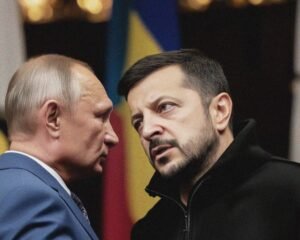




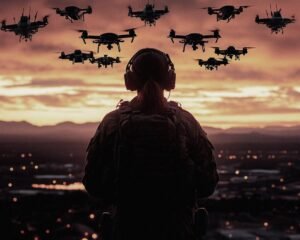




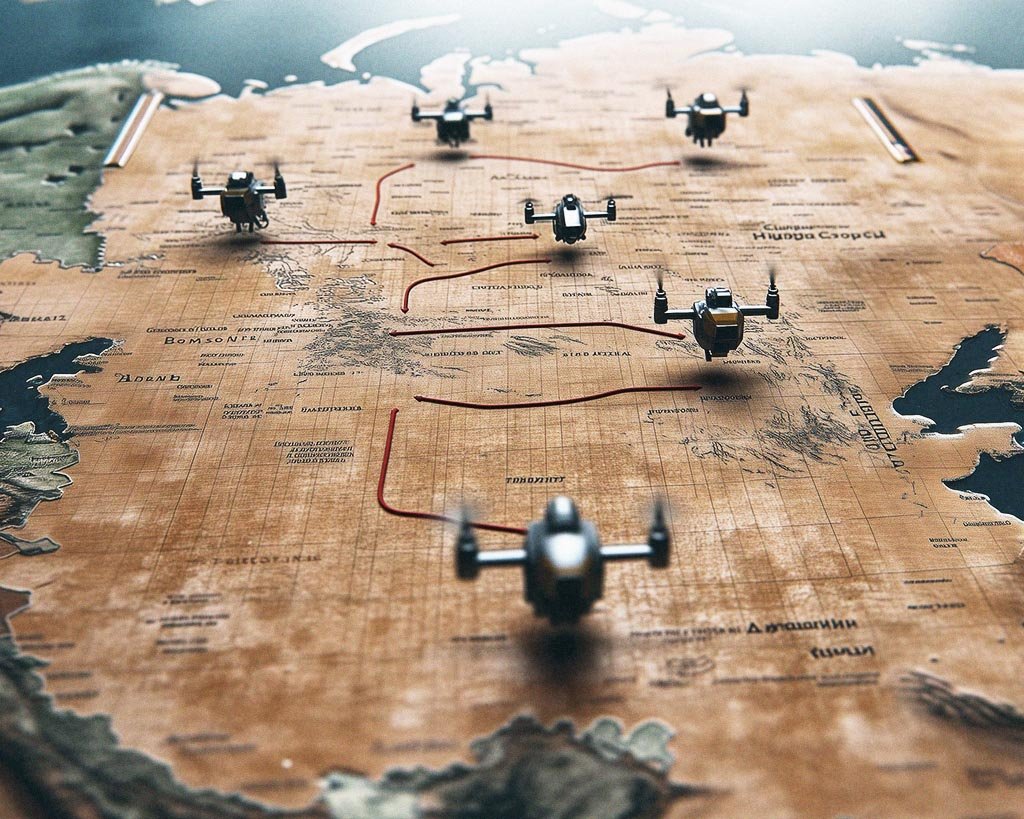
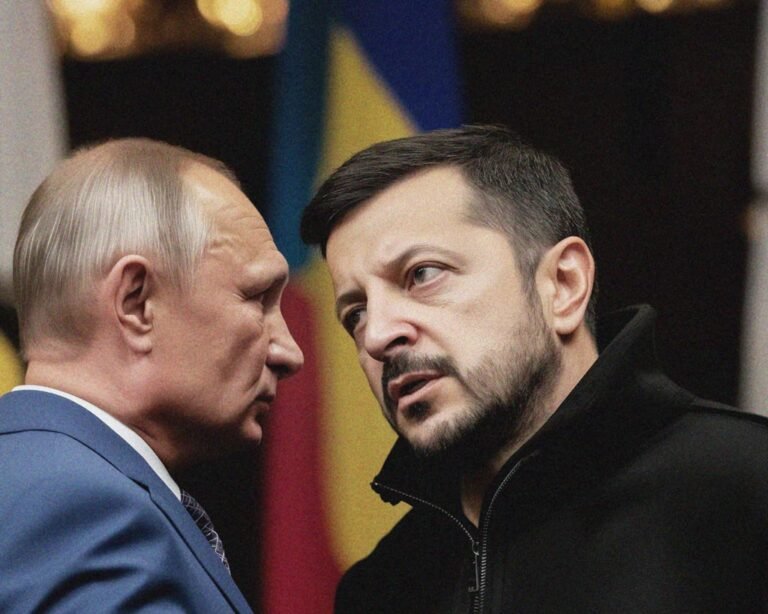


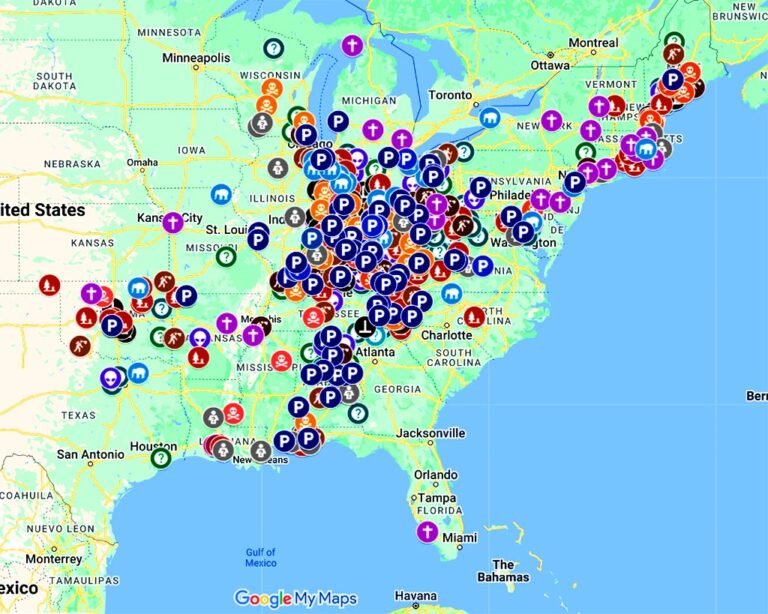
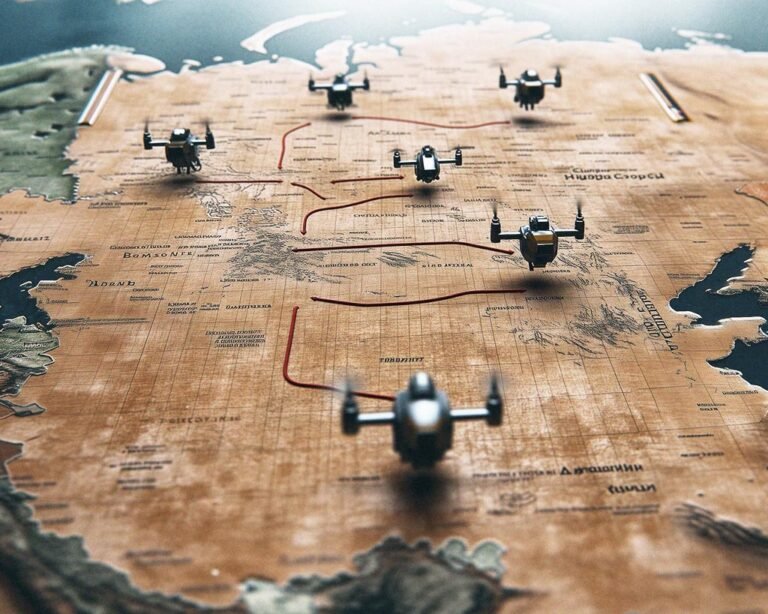
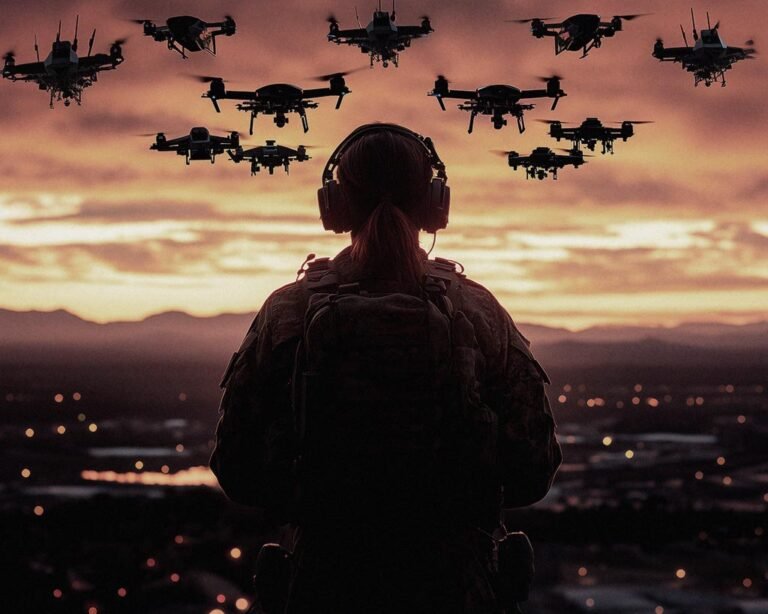


+ There are no comments
Add yours